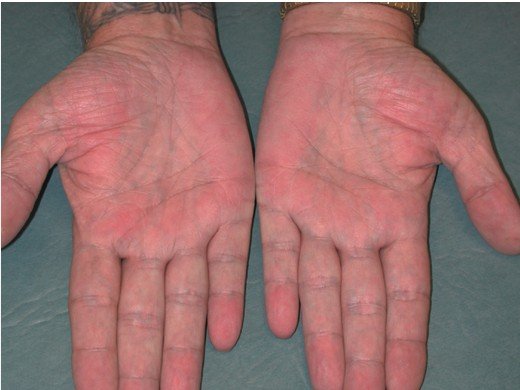Spot Liver Damage Early: Warning Signs on Your Hands and Nails
Scientists uncover how fatty acids disrupt mitochondrial function — and doctors warn that early signs of liver disease can appear on your hands through redness, nail changes, and tremors.
Fatty Acids and Mitochondrial Stress: A New Discovery
Recent research has uncovered a crucial link between fatty acids and a protein known as 4E-BP1, which plays a vital role in regulating protein production. Scientists found that elevated levels of 4E-BP1 — triggered by fatty acids — may influence the way mitochondria respond to stress and even enter these energy-producing organelles themselves.
The mitochondria, often called the “powerhouse of the cell,” perform essential functions like breaking down food, detoxifying the body, managing metabolism, and regenerating energy reserves. They also help maintain hormonal balance and filter harmful substances from the blood. However, when the liver is overburdened — such as in cases of fatty liver disease or hepatitis — mitochondrial efficiency drops, leading to visible health symptoms across the body.
How the Liver Reflects on Your Hands
Medical experts say liver dysfunction can manifest in your hands long before internal damage becomes severe. One of the most visible indicators is palmar erythema — the reddening of the palms, especially at the base — caused by increased estrogen levels that affect blood flow.
Other hand-related symptoms include:
-
Finger clubbing – Swelling of fingertip ends and curved nails, often signaling end-stage cirrhosis.
-
Terry’s nails – White discoloration on the upper nail bed with a pink lower half, which may point to cirrhosis, but can also appear in diabetes or heart disease.
-
Hand tremors and contractures – Involuntary shaking or tightening of the palms, indicating liver infection or toxin buildup.
General Symptoms to Watch For
Beyond visible signs on the hands, several general symptoms may also signal liver distress, including:
-
Chronic fatigue and loss of appetite
-
Abdominal pain and swelling
-
Yellowing of the skin and eyes (jaundice)
-
Unexplained bleeding or bruising
-
Vomiting blood or passing dark, tarry stools
Doctors warn that these symptoms often indicate progressive liver damage, which can worsen if left untreated.
Why Early Diagnosis Matters
Experts emphasize that early detection is key. “Once patients notice redness, tremors, or nail changes, they should consult a physician immediately,” said hepatology specialists. Prompt diagnosis can prevent severe complications, including liver failure or cancer.
Timely treatment — along with lifestyle changes such as reducing alcohol intake, maintaining a balanced diet, and managing body weight — can help restore liver function and protect long-term health.
A Growing Health Concern
With rising cases of fatty liver disease and metabolic disorders worldwide, researchers believe this latest discovery offers valuable insight into how cellular stress responses may contribute to liver decline. The findings reinforce the need for greater awareness of subtle external signs — especially those visible on the hands — as early indicators of deeper systemic problems.



Comments are closed.